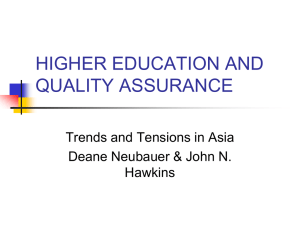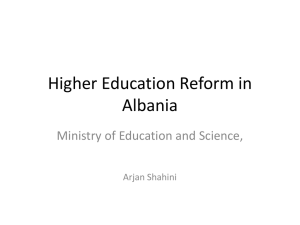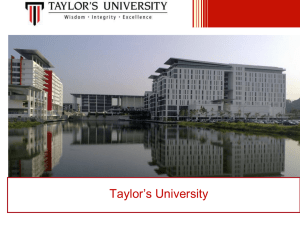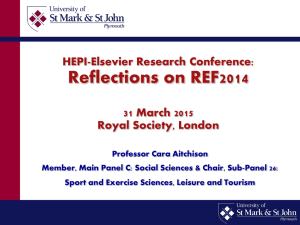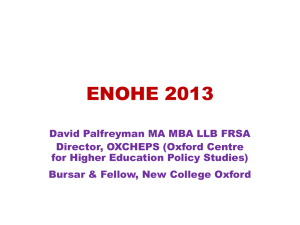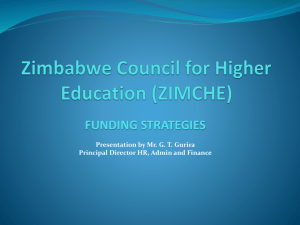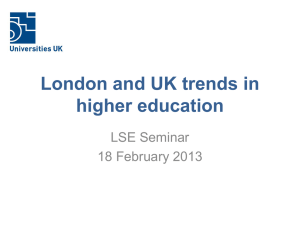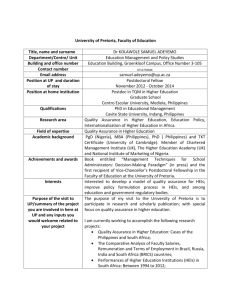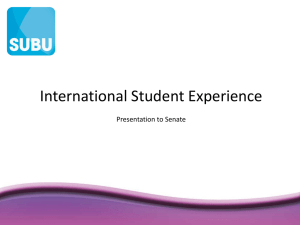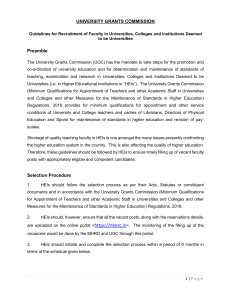CURRICULUM DEVELOPMENT
advertisement
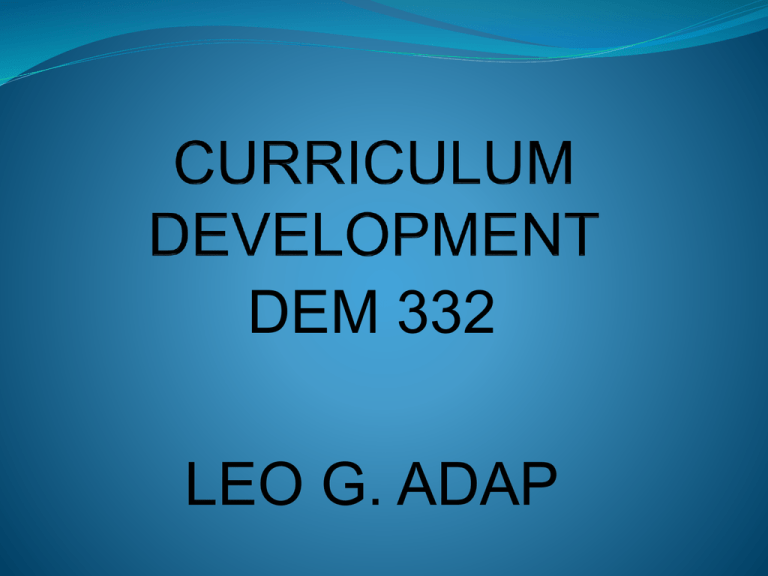
DEM 332 LEO G. ADAP The Higher Education’s Vision, Mission, Philosophy and Goals Vision The Commission on Higher Education – CHED is the key leader of the Philippine higher education system effectively working in partnership with other major higher education stakeholders in building the country’s human capital and innovation capacity towards the development of a Filipino nation as a responsible member of the international community. Mission Higher education shall be geared toward the pursuit of better quality of life for all Filipinos by emphasizing the acquisition of knowledge and information of those skills necessary to make the individual a productive member of society. It shall accelerate the development of high levels professional who will search for new knowledge, provide leadership in various disciplines required by a dynamic and selfsustaining economy. Higher education shall likewise be used to harness the productive capacity of the country’s human resource base towards international competitiveness. Philosophy The higher education philosophy states that in the environment of freedom, excellence and relevance it seeks to harness, develop and catalyze the constructive and productive use of the full potential and capabilities of Filipino man and woman into becoming creative, decisive, competitive, critically thinking and acting individuals who contribute to i) the realization of Filipino identity and strong sense of national pride; ii) the cultivation and inculcation of moral and spiritual foundation; iii) the attainment of political maturity, economic stability and equitable social progress; and iv) the preservation and enrichment of the historical and cultural heritage of the Filipinos, as a people and a nation Goals The goals of higher education is ensuring the attainment of empowered and globally competitive Filipinos via i) quality and excellence; ii) relevance and responsiveness; iii) access and equity; and efficiency and effectiveness. TERTIARY-LEVEL PROGRAM 1. Rationalization of HEI and programs The objective is to lay the foundation for a more efficient and effective system in delivering quality public higher education services and for a more flexible regulatory framework for private higher education provision. The project components of the program include the following: 1.1. Aligning HEI programs with national development goals; Job-Skills Matching Project Relevant and Responsive Research, Development Extension (RDE) Gender and Development (GAD) Program 1.2. Typology and Mapping of HEIs and Programs A system of classifying HEIs is being designed based on their mandates and functions vis-a-vis national development goals. This typology will be harmonized with quality assurance criteria to allow HEIs to focus and excel within their respective classifications and be recognized for such excellence. 1.3. Amalgamation of HEIs and Programs The objective of this program is to restructure the higher education system specifically the public component consisting of SUCs/Local Universities and Colleges (LUCs), and other government schools to improve efficiency in the delivery of quality programs, minimize duplication and promote complementation between and among public and private HEIs. 2. Quality and Standards 2.1. Quality Assurance Projects These projects include the setting and enforcement of Policies, Standards and Guidelines (PSGs) for academic programs, monitoring of compliance and phase out/closure of non-compliant programs, Institutional Quality Assurance Monitoring and Evaluation (IQuAME), and accreditation. Policies Standards and Guidelines (PSGs) formulation and Enforcement Program Monitoring: closure/phase-out of noncompliant programs Institutional Quality Assurance Monitoring and Evaluation (IQuAME) Accreditation Compliance with International Standards 2.2. Quality Improvement Projects Faculty Development Program HEI Management Development Program Establishment of Research & Development (R&D) Centers Center of Excellence (COEs) / Centers of Development (CODs) National Universities and Colleges for Agriculture and Fisheries (NUCAFs) / Provincial Institutes of Agriculture and Fisheries (PIAFs) Contributions to K-12 3. Access to Quality Higher Education 3.1. Student Financial and Assistance Programs (STUFAPs) Aimed at providing access to quality higher education among poor but deserving students, STUFAPs consist of: (1) Scholarships - including the Full Merit, OneTown-One-Scholar (OTOS) and Half Merit programs, the beneficiaries of which are selected on the basis of their performance in qualifying examinations (2) Grants-in-Aid-Tulong-Dunong including: Study Grant Program for Solo Parents and their Dependents, DND-CHED-PASUC Study Grant, OPAPP-CHED Study Grant Program for Rebel Returnees, and CHED Special Study Grant Programs for Senate and House of Representatives, which are meant for the students from poor families, indigenous communities, and persons with disabilities; and (3) Student loans for the needy but deserving students. 3.2. Promoting Alternative System (ALS) Expanded Tertiary Education Equivalency and Accreditation Program (ETEEAP) Ladderized (LEP) Education Program KEY ISSUES IN THE PHILIPPINE TERTIARY EDUCATION Quality of Education Affordability of Education Government Budget for Education Education Mismatch The following proposed: are some of the reforms Upgrade the teachers' salary scale. Teachers have been underpaid; thus there is very little incentive for most of them to take up advanced trainings. Amend the current system of budgeting for education across regions, which is based on participation rates and units costs. This clearly favors the more developed regions. There is a need to provide more allocation to lagging regions to narrow the disparity across regions. Stop the current practice of subsidizing state universities and colleges to enhance access. This may not be the best way to promote equity. An expanded scholarship program, giving more focus and priority to the poor, maybe more equitable. Get all the leaders in business and industry to become actively involved in higher education; this is aimed at addressing the mismatch problem. In addition, carry out a selective admission policy, i.e., installing mechanisms to reduce enrollment in oversubscribed courses and promoting enrollment in undersubscribed ones. Develop a rationalized apprenticeship program with heavy inputs from the private sector. Furthermore, transfer the control of technical training to industry groups which are more attuned to the needs of business and industry.
